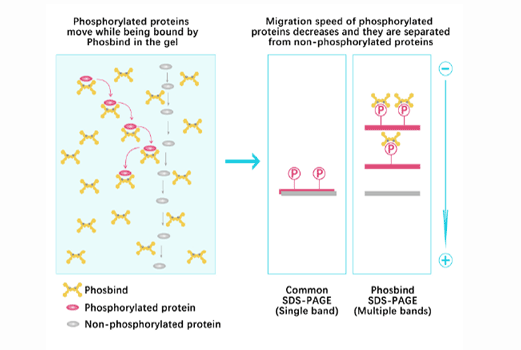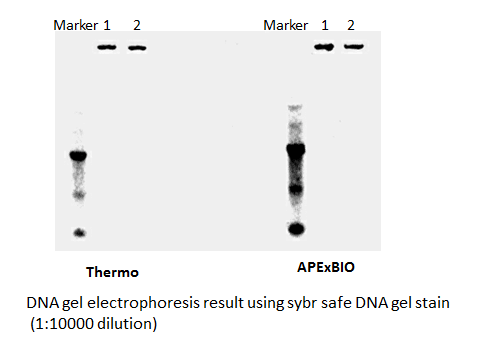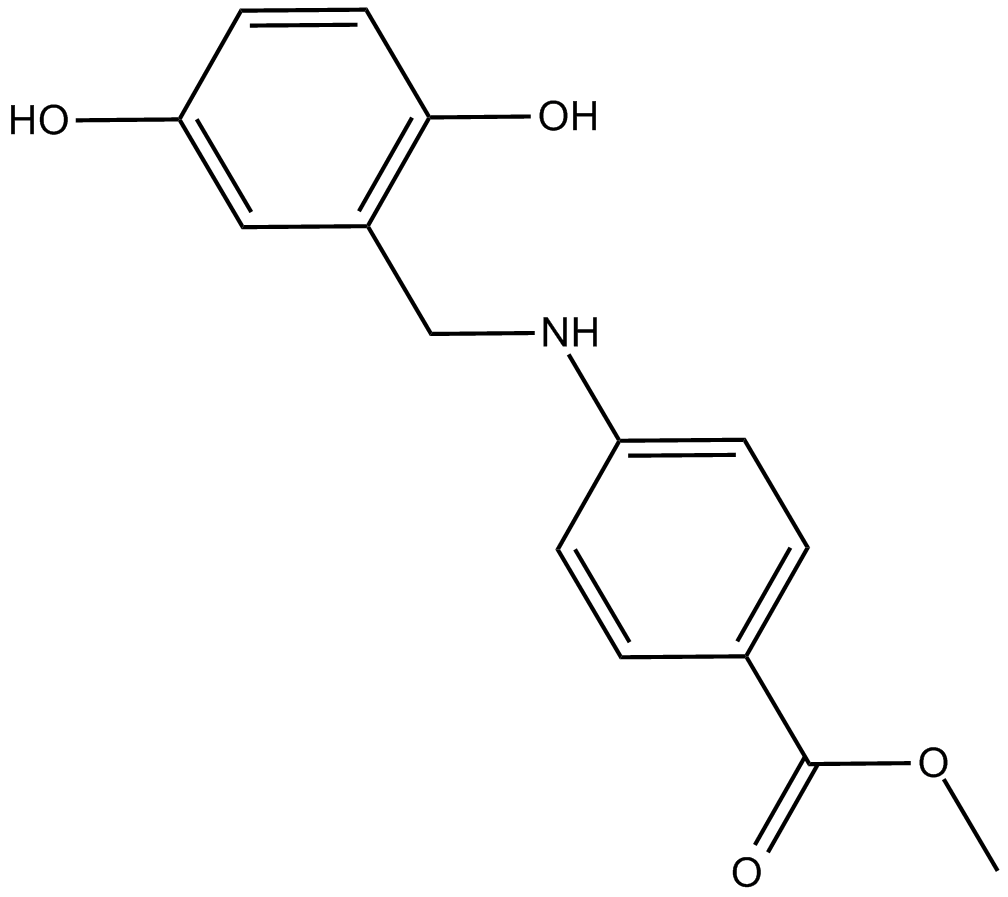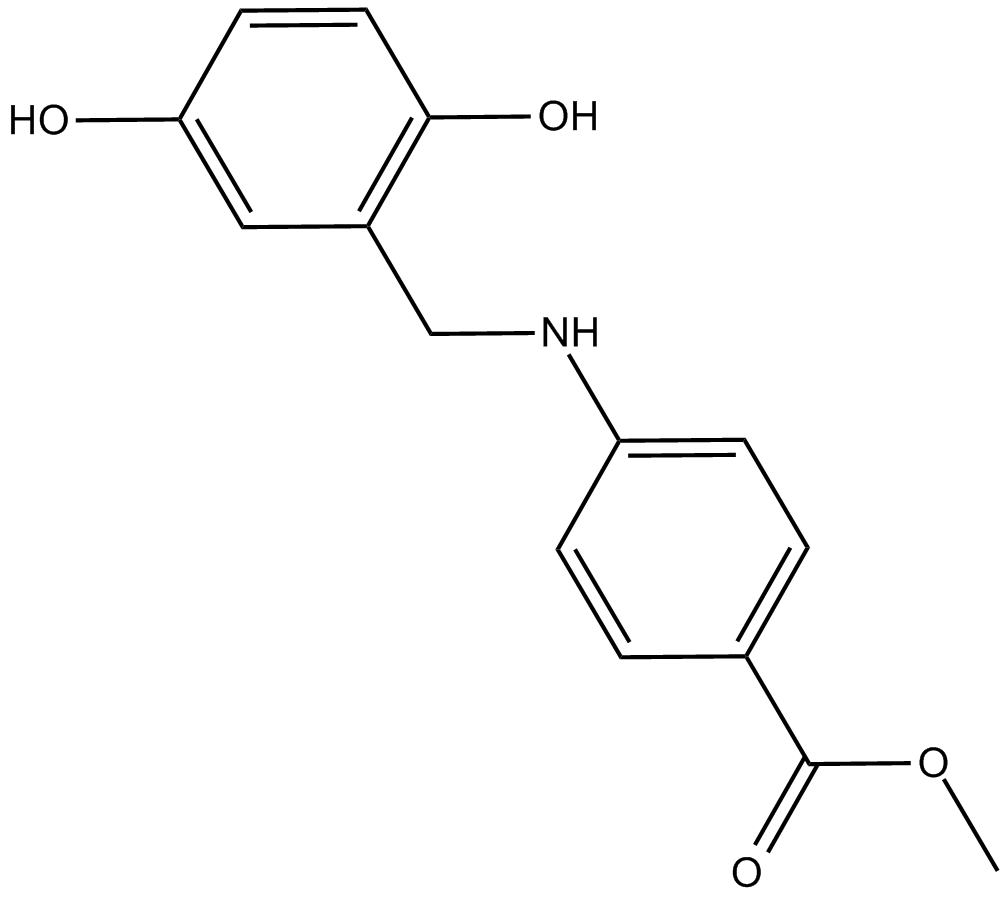AG957

mRNA synthesis
In vitro transcription of capped mRNA with modified nucleotides and Poly(A) tail

Tyramide Signal Amplification (TSA)
TSA (Tyramide Signal Amplification), used for signal amplification of ISH, IHC and IC etc.

Phos Binding Reagent Acrylamide
Separation of phosphorylated and non-phosphorylated proteins without phospho-specific antibody

Cell Counting Kit-8 (CCK-8)
A convenient and sensitive way for cell proliferation assay and cytotoxicity assay

SYBR Safe DNA Gel Stain
Safe and sensitive stain for visualization of DNA or RNA in agarose or acrylamide gels.

Inhibitor Cocktails
Protect the integrity of proteins from multiple proteases and phosphatases for different applications.
AG957 is a tyrosine phosphorylation inhibitor that targets transforming Bcr-Abl fusion proteins (p185Bcr-Abl, p210Bcr-Abl), as well as normal c-Abl [1].
The abl proto-oncogene is expressed in all cell types. The protein p140c-abl is localized both to the nucleus and the cytoplasm. The abl transforming proteins p160gag-abl, p210bcr-abl, and p185bcr-abl are exclusively cytoplasmic proteins. The intrinsic protein tyrosine kinase activity of the transforming abl proteins is higher than that of the normal p140c-abl [1].
AG957 is a tyrosine phosphorylation inhibitor. AG957 inhibited human p185Bcr-Abl, p210Bcr-Abl and normal c-Abl with IC50 values of 4.3, 1, and 7.1 μM, respectively. AG957 inhibited mouse normal c-Abl with IC50 value of 6 μM. AG957 also inhibited epidermal growth factor receptor with IC50 value of 0.25 μM. In chronic myelogenous leukemia (CML) K562 cells, AG957 inhibited p210bcr-abl kinase activity and cell growth. AG957 at 20 μM also inhibited DNA synthesis as early as 2 h by 60% [2]. In K562 cells, AG957, a selective Bcr-Abl inhibitor, blocked taxol-induced PKCi activation and sensitized these cells to taxol-induced apoptosis [3].
In mice, AG957, the c-Abl inhibitor, attenuated LPS-induced pulmonary permeability [4].
References:
[1]. Anafi M, Gazit A, Gilon C, et al. Selective interactions of transforming and normal abl proteins with ATP, tyrosine-copolymer substrates, and tyrphostins. J Biol Chem. 1992 Mar 5;267(7):4518-23.
[2]. Kaur G, Gazit A, Levitzki A, et al. Tyrphostin induced growth inhibition: correlation with effect on p210bcr-abl autokinase activity in K562 chronic myelogenous leukemia. Anticancer Drugs. 1994 Apr;5(2):213-22.
[3]. Jamieson L, Carpenter L, Biden TJ, et al. Protein kinase Ciota activity is necessary for Bcr-Abl-mediated resistance to drug-induced apoptosis. J Biol Chem. 1999 Feb 12;274(7):3927-30.
[4]. Fu P, Usatyuk PV, Lele A, et al. c-Abl mediated tyrosine phosphorylation of paxillin regulates LPS-induced endothelial dysfunction and lung injury. Am J Physiol Lung Cell Mol Physiol. 2015 May 15;308(10):L1025-38.
| Physical Appearance | A crystalline solid |
| Storage | Store at -20°C |
| M.Wt | 273.3 |
| Cas No. | 140674-76-6 |
| Formula | C15H15NO4 |
| Synonyms | NSC 654705,Tyrphostin AG957 |
| Solubility | insoluble in H2O; ≥15.2 mg/mL in EtOH; ≥32.3 mg/mL in DMSO |
| Chemical Name | 4-[[(2,5-dihydroxyphenyl)methyl]amino]-benzoic acid, methyl ester |
| SDF | Download SDF |
| Canonical SMILES | OC1=C(CNC2=CC=C(C(OC)=O)C=C2)C=C(O)C=C1 |
| 运输条件 | 蓝冰运输或根据您的需求运输。 |
| 一般建议 | 不同厂家不同批次产品溶解度各有差异,仅做参考。若实验所需浓度过大至产品溶解极限,请添加助溶剂助溶或自行调整浓度。溶液形式一般不宜长期储存,请尽快用完。 |
质量控制和MSDS
- 批次:
化学结构



